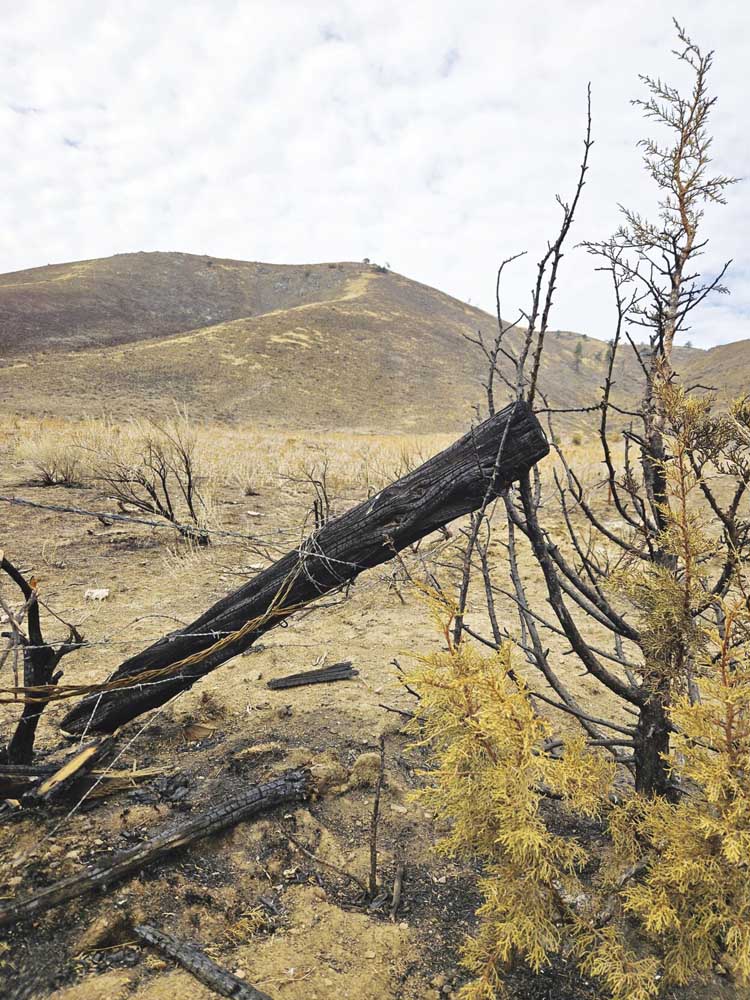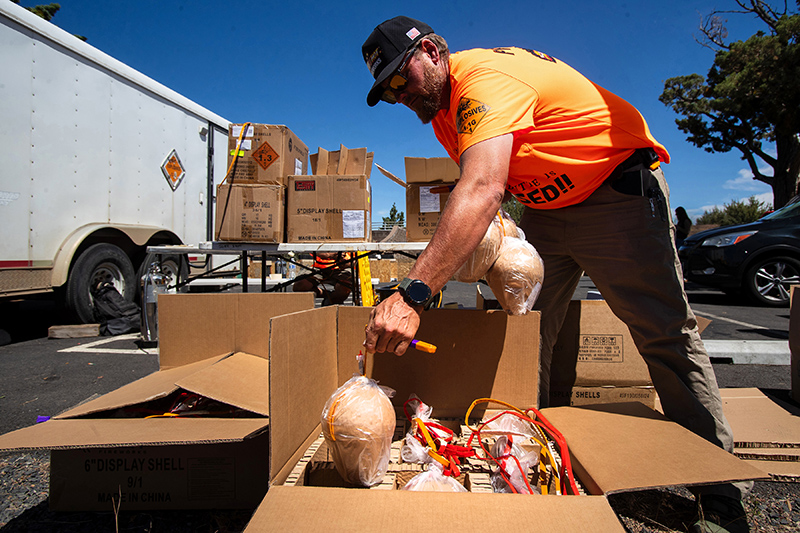Rehab for public land burned in Durkee, Cow Valley fires estimated at $27 million
Published 1:00 pm Thursday, October 24, 2024

- The Durkee Fire charred dozens of miles of fences in July.
Rehabilitating public land burned in two of the region’s biggest wildfires this summer could cost about $27 million over the next three years, according to post-fire surveys.
The cost estimate includes spreading grass and shrub seeds, controlling noxious weeds, repairing and replacing fences, and other work.
The Bureau of Land Management assessed areas burned in the Durkee and Cow Valley fires.
The Durkee Fire, started by lightning on July 17, was Oregon’s biggest this year, at 294,265 acres.
The fire started near Durkee and burned in Baker and Malheur counties.
The Cow Valley Fire, which was human-caused and is under investigation with a reward of $8,000 for information leading to an arrest, started on July 11 and burned 133,490 acres, all in Malheur County.
Even before the fires were contained, the BLM assembled a team of botanists, biologists and other experts to assess the damage to public land and proposed rehabilitation. The team’s reports deal only with the public land burned. But in both the Durkee and Cow Valley fires, flames spread over more acres of private property than public.
The breakdown:
Durkee
• 165,817 acres private
• 120,095 acres BLM
• 5,730 acres state-owned
• 2,623 acres U.S. Forest Service
Cow Valley
• 73,689 acres private
• 58,522 acres BLM
• 1,068 acres state-owned
• 209 acres Bureau of Reclamation
There is state and federal financial aid available to help private landowners deal with fire damage.
Replanting
For both the Durkee and Cow Valley fires, the most expensive rehabilitation work is spreading seed for grass and bitterbrush.
Most of the land burned in both blazes is sagebrush steppe, a mixture of sagebrush and other shrubs, and grasses such as bluebunch wheatgrass and Idaho fescue.
Officials recommend both ground and aerial seeding, including 107,000 pounds of bluebunch wheatgrass seed for the Durkee Fire, at an estimated cost of $1.1 million, and 126,000 pounds for the Cow Valley Fire, at an estimated $1.3 million.
Some seeding could be done this fall, with the work potentially continuing through 2027.
Estimated costs for the Durkee Fire is $3.9 million for ground seeding and $2 million for aerial seeding.
For the Cow Valley Fire, costs are estimated at $5.5 million for ground seeding and #3.1 million for aerial seeding.
The challenge after a fire is to help native and desirable plants, such as grasses that serve as food sources for cattle and for wildlife, while preventing cheatgrass, medusahead and other noxious weeds from crowding out the natives, said Sarah Sherman, manager for the BLM’s Baker Field Office.
Cheatgrass and other weeds tend to thrive after fires.
The estimated cost for noxious weed control is $2.5 million for the Durkee Fire and $3.1 million for the Cow Valley Fire.
Fencing
Matt McElligott, a Baker County cattle rancher and president of the Oregon Cattlemen’s Association, said he believes replacing and repairing burned range fences will be the largest expense resulting from the blazes.
Flames can char wooden fence posts, and the heat can cause barbed wire to lose its tensile strength, McElligott said.
He said replacing a fence can cost $15,000 per mile. The two fires damaged dozens of miles of fence.
The burned area response teams estimate that it will cost about $1.4 million to repair or replace fences, gates and cattleguards in the Durkee Fire area, and about $700,000 on the Cow Valley Fire.
Sherman said BLM will pay to replace or repair fences that are on public land and are in the agency’s inventory of range improvements.
Landowners are responsible for fences on their property, but both Sherman and McElligott said financial assistance is available through federal programs.
Besides the fencing costs, the fires will have a significant effect on ranchers who have grazing allotments that burned — 71 in the Durkee Fire, 16 in the Cow Valley Fire.
Those allotments will be closed to grazing for at least one year, and potentially for two years or more depending on how quickly grass returns.
Oregon’s two senators and six representatives are urging the Biden Administration to grant Gov. Tina Kotek’s request for a major disaster declaration for Oregon due to this summer’s record-setting wildfires, which burned 1.9 million acres, mostly east of the Cascades.
“Specifically, we request that your administration coordinate with the Governor’s office to ensure that State, Local, and Tribal governments have access to all the federal resources available through the Federal Emergency Management Agency’s (FEMA) Public Assistance,” the legislators wrote in an Oct. 24 letter.








